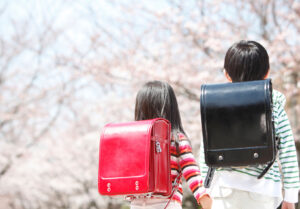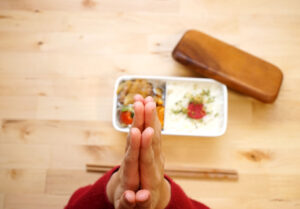When the New Year arrives, “Hatsu – the first of the year” events are very popular in Japan.
It was believed that the deity of the year would come to each household in the New Year, bringing a bountiful harvest and happiness. The “first event of the year” was an auspicious occasion, a good omen, and an important event to pray for happiness in the New Year.
Although time has passed and culture and social life have changed, the culture of enjoying and cherishing the “Hatsu ~ firsts” still remains.
Hatsu-Hinode: Worshiping the first sunrise of the year

In Japan, it has been believed that with the first sunrise of the year, the Annual Deity appears to bring bountiful harvests and happiness to each family.
Worshipping the first sunrise of the year is said to be a way of praying to the god for a bountiful harvest and happiness in the coming year. In reality, this idea has only been around for the past 100 years or so, but it is widely interpreted as if it has been such a custom since ancient times.

Hatsu-Fuji: Japanese people want to see Mt. Fuji on New Year’s Day

Fuji on New Year’s Day from the town of Edo (around present-day Chiyoda-ku, Tokyo) during the Edo period (1603-1867) was called “Hatsu-Fuji,” and was popular as a good omen.
Today, not only in Tokyo, viewing Mt. Fuji on New Year’s Day is popular as a good omen. Many people climb Mt. Fuji on New Year’s Day or go to places where they can see Mt.
Hatsu-Mode: New Year’s visit to shrines and temples

Hatsumode is the first visit to a shrine or temple after the New Year.
It is a time to give thanks for the old year and wish for a good new year.

Hatsu-Yumu: Divination by Dreams in the New Year

The dream we have on a certain night in the New Year is called “Hatsu-Yume” . There is a custom to divine the good or bad luck of the New Year by the content of the dream.
However, there are three ways of thinking about “a certain night,” and there is no correct answer.
- From the night of New Year’s Eve to the morning of New Year’s Day
- From the night of January 1 to the morning of January 2 ←General first dream day
- From the night of the 2nd to the morning of the 3rd
In the Edo period, people thought that dreaming of Mt. Fuji, a hawk, and an eggplant would bring good luck.
This remains as a proverb even today. In addition to this, there are many dream divinations, in which the content of the dream predicts the luck of the New Year according to love, work, family, friends, and mysterious experiences.
Hatsu-sale: Shopping for the New Year is a Good Deal

Hatsu-Uri is the first sale of goods at the beginning of the New Year.
There are “fukubukuro” (gift bags) in which various items are packed in bags or boxes and sealed for sale, giveaways depending on the amount of purchase, and sales of discount gift certificates. Some people wait in line from midnight at stores and department stores popular for their extravagant prizes and fukubukuro.
Until the early 1980s, January 4 was the usual date. Since then, with the increase of year-round and 24-hour sales, supermarkets and large stores have their first sales on January 1 or 2. In recent years, winter bargain sales begin at the same time.
Individual stores have their first sales on January 5 to 7, depending on the day of the week.
Kaki-Zome: Writing Characters with a Wish in Japanese Writing Brush

The first time to write letters or draw pictures with a brush in the New Year is called “Kaki-Zome (the first writing of the New Year).
Originally a court event, it became popular among the general public during the Edo period (1603-1867).
It is customary to write goals and aspirations for the New Year with a Japanese brush, or to write Japanese characters with a brush in the hope that the characters will be written beautifully.
Shigoto-Hajime: The First Working Day of the New Year is Important

The first day of work in the New Year is called “Shigoto Hajime” (beginning of work), and has been cherished as such.
In ancient times, there was a custom of doing a little of one’s usual work on January 2 to wish for safety, a good harvest, and improvement of skills in the New Year.
For example, in farming villages, people plowed the fields and offered rice and rice cakes to the deities of the rice paddies. In mountain villages, people worshipped the deity of the mountain and cut down trees. In fishing villages, boats were washed, cleaned, and decorated with New Year’s ornaments and put out to sea.
Nowadays, public administration and other organizations usually start work on January 4, while private companies usually start work on January 5.
Due to changes in working styles and social life, an increasing number of companies are taking longer New Year’s vacations or doing nothing special on the first day of work.
Hatsu-Seri: New Year’s Auction is a Festive Market

The first market auction of the New Year is the “Hatsu-Seri” (first auction). It is usually held on January 5.
The first tuna auction at Tokyo’s Toyosu market is particularly noteworthy.
In 2019, bluefin tuna (278 kg) from Ohma, Aomori Prefecture, reached an all-time high of 333.6 million yen, and domestic sea urchin tied a record high. These are special prices only on the day of the first tuna auction, known as the “Gosyugi-Soba (congratulatory market)”.
Highest price in recent tuna first auctions. All of the tuna were from Ohma, Aomori Prefecture.
| Year | Price | Weight |
| 2023 | 36.04 million yen | 212kg |
| 2022 | 16.88 million yen | 211kg |
| 2021 | 20.84 million yen | 208㎏ |
| 2020 | 193.2 million yen | 276㎏ |
| 2019 | 333.6 million yen | 278kg |
| 2018 | 36.45 million yen | 405㎏ |
| 2017 | 74.2 million yen | 212㎏ |
| 2016 | 14 million yen | 200㎏ |
| 2015 | 4.51 million yen | 180㎏ |
| 2014 | 7.36 million yen | 230㎏ |
Prices were abnormally high in 2019 and 2020; prices have dropped considerably since 2021, partly due to COVID-19. Incidentally, under normal circumstances, natural bluefin tuna, no matter how high quality, costs around 5 million yen per fish!
Dezome-Shiki: Firefighters Receive the Highest Attention

“Dezome-Shiki” is an event held by firefighters throughout Japan in early January.
It is open to the public at large parks. It includes the simultaneous discharge of water from fire trucks, firefighting drills for evacuation and rescue, demonstrations of traditional skills such as ladder-riding, and a parade of fire trucks. This event is popular among children and people of all ages.
Hatsu-Mono : First harvest of the season is popular even at high prices

Hatsu-Mono are vegetables, fruits, grains, seafood, etc. harvested very early in the season.
Although the taste of an ingredient may not be as good as it should be at its best, the fact that it is a first-time or very early product or the first arrival from the producing region may give it a distinctly high commercial value.
There is a superstition that says, “If you eat Hatsu-Mono, your life span will be extended by 75 days”. Although few people believe in it, especially in restaurants, “Hatsu-Mono” is a popular menu item, even at a high price.

Since it was believed that the New Year’s Deity would bring happiness on New Year’s Day, welcoming the New Year has always been very important in Japan. As times change and social life changes, people’s awareness also changes. In recent years, New Year’s events have been considerably simplified and have become events rather than beliefs.
In addition, due to the flood of ambiguous information, there are many practices that are mistakenly considered “ancient Japanese traditions,” such as policies by the Meiji government or even corporate promotions from the Taisho and Showa eras. Some of these customs are said to be “traditions” even if they are not 100 years old, but only a few decades old. There are also many people and companies that pass on this pseudo-tradition with a knowing face.
Nevertheless, these new customs will one day become “uniquely Japanese culture” as time goes by. I hope you will enjoy such ambiguous Japanese culture.
👉Feel free to contact us if you have any questions.

A VPN is required to use Japanese websites, TV, and video viewing services overseas. NordVPN is easy to use and cost-effective! 30 days money back guarantee.
^^ Access Japanese content safely and reliably! ^^










